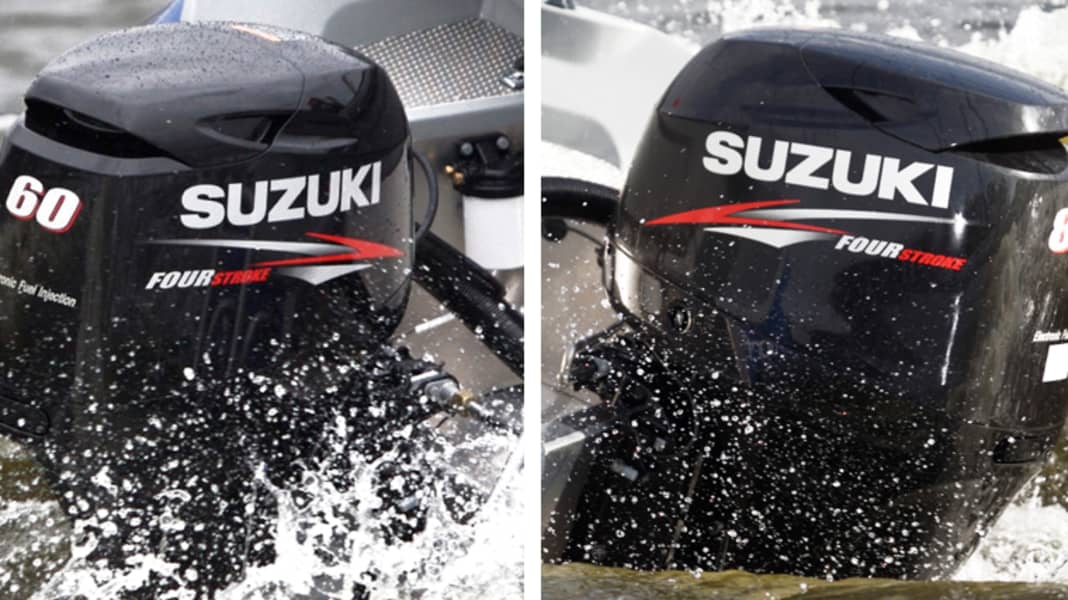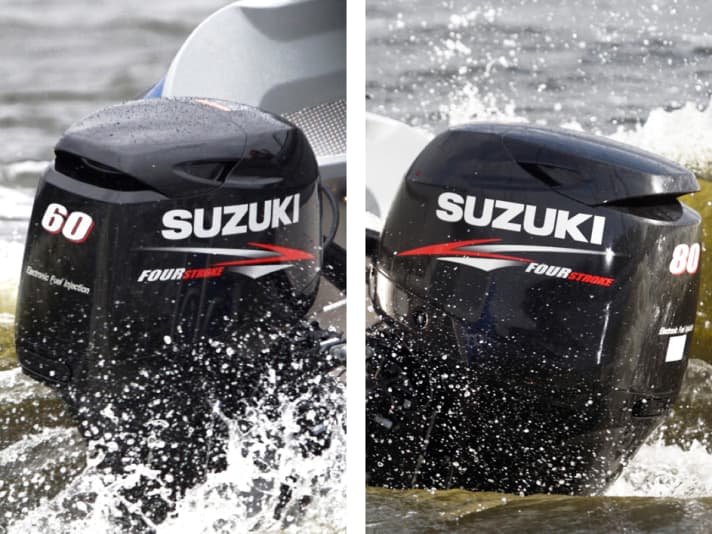

The requirements for boat engines are as different as day and night with regard to their "areas of use". Anglers do not need the maximum permissible engine power at the transom of their boat, whereas water skiers cannot cope with engines that are too small.
The two engines we tested are both from the Japanese manufacturer Suzuki, with outputs of 60 hp and 80 hp. The test boat is a 5.15 metre long Buster X. The standard built-in tank holds 72 litres of fuel, and the shipyard gives the dead weight as 480 kg. The aluminium Buster X can be motorised with a long-shaft outboard up to 80 hp.
It is a well-known fact that when it comes to engines, it is not just the exterior that counts, but also the inner values. The DF60A has three cylinders arranged in series. Suzuki specifies the cubic capacity as 941 cc. The maximum output of the four-stroke outboard is 44.1 kW, which corresponds to 60 hp.
Although the 40 hp and 50 hp models are identical to the DF60A, they are throttled. When it comes to fuel, the 60 is satisfied with 91 octane, which is interesting for skippers refuelling in the Mediterranean or in Eastern Europe. In Germany, as we know, only higher-grade petrol is sold at bunker and road filling stations, i.e. Super and Super Plus.
The fuel injection of the 60 is controlled electronically by an engine control unit, which also regulates the ignition, among other things. According to Suzuki, this keeps fuel consumption low. The weight of the DF60A is also low. After a diet, we measured it at 109 kg. A value that earned the engine the title of "lightest test engine" in our last 60 hp outboard comparison in BOOTE 8/10.
Its full-load speed range extends from 5300 rpm to 6300 rpm. The full-load speed of 6000 rpm that we achieved shows that the choice of the 3-x-11 1/4"-x-15" propeller was the right one. A 12 V/19 A alternator provides sufficient voltage.
The DF80A, our second engine in the comparison, has a larger alternator. This provides up to 27 A charging current at a voltage of 12 V. If you compare the values of the 80 with those of the DF60A, everything is of course somewhat larger. The 75 mm bore, 85 mm crankshaft stroke and 4 cylinders result in a displacement of 1502 cc.
From this, the engine delivers 80 hp. As with the DF60A, there are also identical models of the DF80A. These deliver 70 hp and 90 hp to the crankshaft. The gas exchange is ensured by 16 valves paired with two overhead camshafts.
You can find the entire comparison with a summary and all measurement results in the current April issue of BOOTE!
